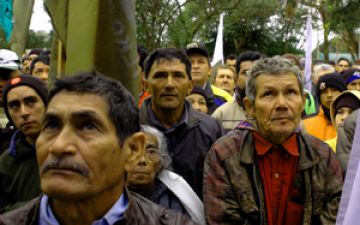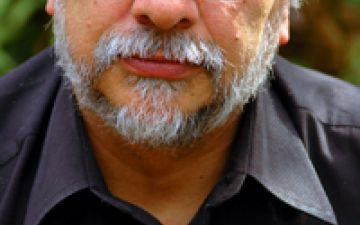South America
Suriname: Tafelberg
Bolivia: The Road to Los Yungas
Suriname: Fingers Crossed for Tafelberg
Bolivia: The Villa Fátima Market
Complications in Suriname
Well, I was planning to sit down and write a bit of background on the little bat that we're after down here in Suriname--about the fact that only ten specimens have ever been caught (four by my dad or his teams), about the interesting rarity of this species and the delicate ecosystem of the Guiana Shield--all in preparation for talking with the local officials tomorrow at STINASU and the governmental division Nature Conservation....
Arrival in Paramaribo
We got into Suriname right on time last night, though that was almost two hours earlier than originally scheduled, thanks to the air traffic controllers strike. We were the only plane on the runway, but they still parked us on the far side of the tarmac, so we all trekked across like a string of ants toward the glowing green neon sign: "Johan Adolph Pengel Airport." We caught our shuttle outside of baggage claim and drove toward Paramaribo.
Bolivia: Evo's New Year
Pandora's Box of Ills
As the world's hunger for meat increases because of expanding middle classes and changing tastes, feeding the animals to feed that hunger is having a significant impact on our planet's agriculture - nowhere more so than Latin America where forests are giving way to soybean empires.
Paraguay is the world's fastest growing soy producer; its eastern region - 2 ½ million hectares of it - is devoted to the crop that has brought wealth and development to one of the poorest countries in South American.
Soy Provides Opportunity, Challenges for Paraguay
The global production of soybeans is on the rise, thanks to increasing demand. The fastest growing soy producer in the world is Paraguay, the landlocked country in South America still recovering from years of dictatorship and corruption.
The Last Commons: Drilling in the Peruvian Amazon
Kelly Hearn tells the story of one trip into the Amazonian rainforest to give a big-picture look at the hydrocarbon industry's push into the Tropical Andes.
Politics of Change in Paraguay
Paraguay has been run by one political party for the past half century. But former Catholic bishop Fernando Lugo is hoping to challenge that. Reporter Charles Lane has the story.







